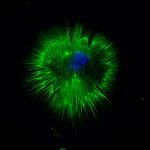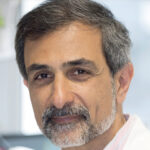Link to Pubmed [PMID] – 31575648
Link to HAL – hal-02368565
Link to DOI – 10.1242/dev.181750
Development (Cambridge, England), 2019, 146 (20), pp.dev181750. ⟨10.1242/dev.181750⟩
The control of all our motor outputs requires constant monitoring by proprioceptive sensory neurons (PSNs) that convey continuous muscle sensory inputs to the spinal motor network. Yet the molecular programs that control the establishment of this sensorimotor circuit remain largely unknown. The transcription factor RUNX3 is essential for the early steps of PSNs differentiation, making it difficult to study its role during later aspects of PSNs specification. Here, we conditionally inactivate Runx3 in PSNs after peripheral innervation and identify that RUNX3 is necessary for maintenance of cell identity of only a subgroup of PSNs, without discernable cell death. RUNX3 also controls the sensorimotor connection between PSNs and motor neurons at limb level, with muscle-by-muscle variable sensitivities to the loss of Runx3 that correlate with levels of RUNX3 in PSNs. Finally, we find that muscles and neurotrophin 3 signaling are necessary for maintenance of RUNX3 expression in PSNs. Hence, a transcriptional regulator that is crucial for specifying a generic PSN type identity after neurogenesis is later regulated by target muscle-derived signals to contribute to the specialized aspects of the sensorimotor connection selectivity.


